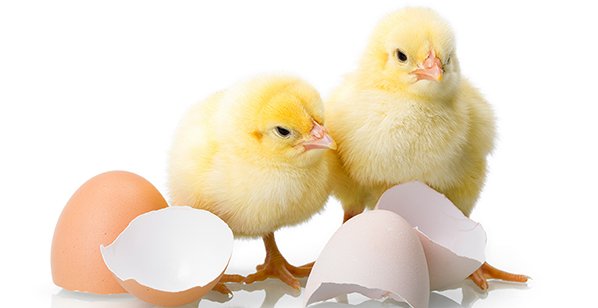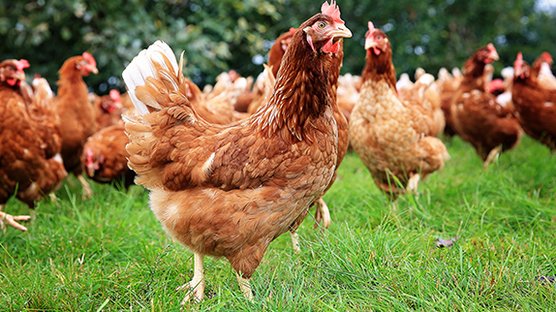
Published on June 2, 2020
Considerations for better hatchability
The success of the continuous supply of day-old chicks is highly dependent on both fertility and hatchability.
Let’s start with some definitions first: fertility refers to the percentage of hatching eggs that are fertile, while hatchability is the percentage of fertile eggs that hatch (hatch out of eggs fertile). In this article we will give you some tips to improve the results of your breeder flocks.
Nutrition
The diet of the breeder flocks is of high importance, not only for the quality of the hatching eggs, but also for the quality of the semen of the roosters. Make sure that the birds always have enough to eat. When your breeder flock is in a negative energy balance, this will have a negative impact on fertility and hatchability. All major breeding companies can provide you with their recommended diets. Make sure you maintain the minimum levels of linoleic acid, selenium and vitamin E, as they are all positively related with hatchability and fertility. Be sure a breeder premix is used and not a layer premix.
Age
There is a general tendency to think that fertility will decline when your breeder flock will become older. This is a natural phenomenon that is extremely hard to influence via management or genetic selection. The ratio between male and female birds is very important to optimize your fertility results. Too many males can put too much physical stress on the female breeders and can negatively influence fertility and longevity. Too few males can result in very poor fertility as the females can become too dominant towards the males, reducing the amount of successful mating. Start in production with a maximum of 9% males (floor systems) and reduce slowly to 8-8.5%. Pay attention to male management (selection of poor males) constantly.
The ratio between male and female birds is important to optimise fertility results
Egg quality
not all eggs produced by breeder hens are suitable to be placed in the incubators. Proper sorting of hatching eggs is essential in order to improve your fertility and hatchability results. Too small eggs (<45 grams) have a lower chance to hatch compared to medium and large eggs. Use only eggs of 50 grams and above. Also make sure you take out all dirty and cracked eggs. An incubator offers the ideal environment for bacteria to multiply quickly. Rotten eggs or bangers/exploders will have a negative impact on the quality of day-old chicks.
Egg storage
Always allow eggs to cool gradually, e.g. do not place them in storage too quickly after lay. Try to minimize the duration of storage as long term storage (>7 days) has a negative impact on egg quality and embryo survival, both of which lead to the decrease of hatchability. It is also known that the decrease of hatchability is higher in older breeders (>50 weeks of age). Short storage of hatching eggs (<7 days) is advised for young breeder flocks (<35 weeks of age) as this will lead to higher hatchability in general. Give hatching eggs also some “rest” after laying and don’t set them too quickly, only 1-2 days after production.
Egg storage temperature and humidity are two factors that can be easily managed and can contribute to the success of your hatchability. Always remember that storage starts at the day of egg production at the breeder farm. A best practice is to label each batch of hatching eggs with the production date. Try to minimize direct cold/hot air flow from the egg room coolers, humidifiers or the heating system as this will all lead to higher embryonic mortality. Also never place your hatching eggs directly against the wall or on the floor.
Tip: allow extra incubation time for stored eggs. On average, one hour extra for each additional day of storage after the first 3 days is recommended.
Recommended climate condition during egg storage

*The recommended relative humidity range for eggs stored on paper trays is 50 – 75%. The risk for dehydration is much smaller on paper trays, and the risk of floppy trays due to too high relative humidity should be avoided.

